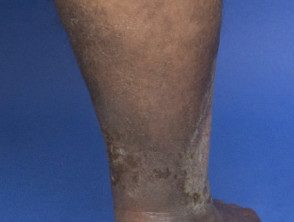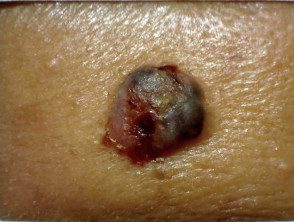What is ethnic? dermatology?
Ethnic dermatology is an area of interest dedicated to the presentation, diagnosis and management of skin disorders in patients who have pigmented skin. Also known as skin of color dermatology. [1].
Ethnicity is defined as “the ethnic group or groups with which a person identifies or has a sense of belonging. It is a measure of cultural affiliation, in contrast to race, ancestry, nationality or citizenship ”[2]. Ethnicity is self-identifying and an individual may belong to more than one ethnic group. Ethnic dermatology highlights the importance of genetics, biology, and cultural practices in skin conditions.
Ethnic diversity

Ethnic diversity strengthens ties.
Why is ethnic dermatology important?
The manifestation of skin diseases can vary between ethnic groups and skin colors.
Clinical dermatology emerged as an independent discipline in Europe during the 19th and 20th centuries. [3]. This was a time when anthropologists and philosophers classified human racial groups within a hierarchy, being influenced by the social ideas of the time. [4].
The classic descriptions of skin conditions were based on patients with lighter skin. [1]. Traditional dermatology does not address the social and cultural issues of people with dark skin, which can influence the dermatological presentation and the patient's outlook toward disease, medical care, and treatment. [5].
What are the limitations of ethnic dermatology?
Ethnic dermatology is a non-specific term for a heterogeneous group with dark or non-Caucasian skin [3].
- Skin color is a continuous variable. [4]. At what point does it become "ethnic" or "pigmented"?
- Using the term "ethnic" can be controversial [6]. Should patients with skin disorders be classified into ethnic groups with which they self-identify, or should they be classified by race, skin color, or Fitzpatrick skin phototype? How should people who identify with more than one group be classified? [6]?
- Members of an ethnic majority will tend to experience better health, including less predominance and the severity of skin conditions, than ethnic minorities [7].
- The effects of Socioeconomic status must be considered. Access to adequate nutrition, dermatological care, and the cost of treatment contribute to inequity. [8].
How can skin color influence skin presentations?
Melanin it is the key determinant of skin color. Eumelanin (normal melanin) and pheomelanin (a red pigment) are synthesized by melanocytes at basal cap of the epidermis. Skin color is dependent on the variation in the amount and type of melanin [4].
- In darker skin, the size, shape, and rate of production of melanocytes is greater than in lighter skin, and melanin is contained in large melanosomes [4,5]. the enzyme tyrosinase, which catalyzes the production of melanin, is most active in dark skin [1].
- The color of the skin influences the structure of the skin. Darker skin tends to have thicker skin. dermis and smaller collagen fibers [7].
- The color of the skin also affects the aging of the skin. Melanosomes associated with dark skin tend to break down more slowly than light skin. [4].
- Darker skin provides greater protection against UV exposure than lighter skin, due to a higher amount of melanin in the skin keratinocytes [4].
Examples of the variation of the dermatological presentation with the color of the skin.
Eczema presents as itchy, dry skin, with erythema visible on fair skin due to dilation of the capillaries.
In more pigmented skin, the erythema is not apparent and is replaced by patches of dark skin color. Inflammation results in the launch of inflammatory mediators that increase melanogenesis by melanocytes, resulting in post-inflammatory hyperpigmentation [3,9].
Skin cancers on skin of color, including melanoma, often present in an advanced stage or atypically with a poor forecast than skin Cancer in lighter-skinned populations [8,10].
Ethnic dermatology

Venous eczema

Psoriasis

Basal cell carcinoma
Perceptions of skin color.
Cultural definitions of beauty vary from culture to culture and are associated with deeply held beliefs within ethnic populations.
- The perception that lighter skin is more socially desirable is notable among Asian and African cultures.
- Fair skin can be seen as a marker of higher socioeconomic status in various cultures. [4].
Ethnic groups with these beliefs often come from a context of colonization by Europeans, who historically held positions of higher status and well-being compared to indigenous populations. The legacy continues with advertising that continues to promote lighter skin as a standard of wealth, power, modernity and well-being. [4]. In contrast, those with lighter skin may be looking for a tan or disguising their skin color with makeup.
Skin lightening products
Skin lightening or whitening creams involve the cosmetic use of a range of agents widely available in the Middle East, Asia, South America, and elsewhere sold in ethnic stores and supermarkets, despite legal restrictions in many jurisdictions due to to its serious potential side effects. [eleven].
-
Mercury and caustics were previously key components of skin lightening agents, but are becoming less common. [4].
- Products available to lighten the skin may include hydroquinone-based compounds and corticosteroids, most commonly clobetasol propionate (an ultra-potent current steroid).
- Paradoxically periorbital Hyperpigmentation is the most common side effect of applying hydroquinone to the skin. [eleven].
- Applying high doses of steroids to the skin increases the risk of skin infections such as cellulitis, scabies, and impetigo (superficial bacterial pyoderma) [4].
- Long-term use of steroids can lead to acne, steroid-induced skin. atrophy, negative comments about endogenous cortisol secretion, hypercortisolism, and adrenal insufficiency, among others adverse events [11].

